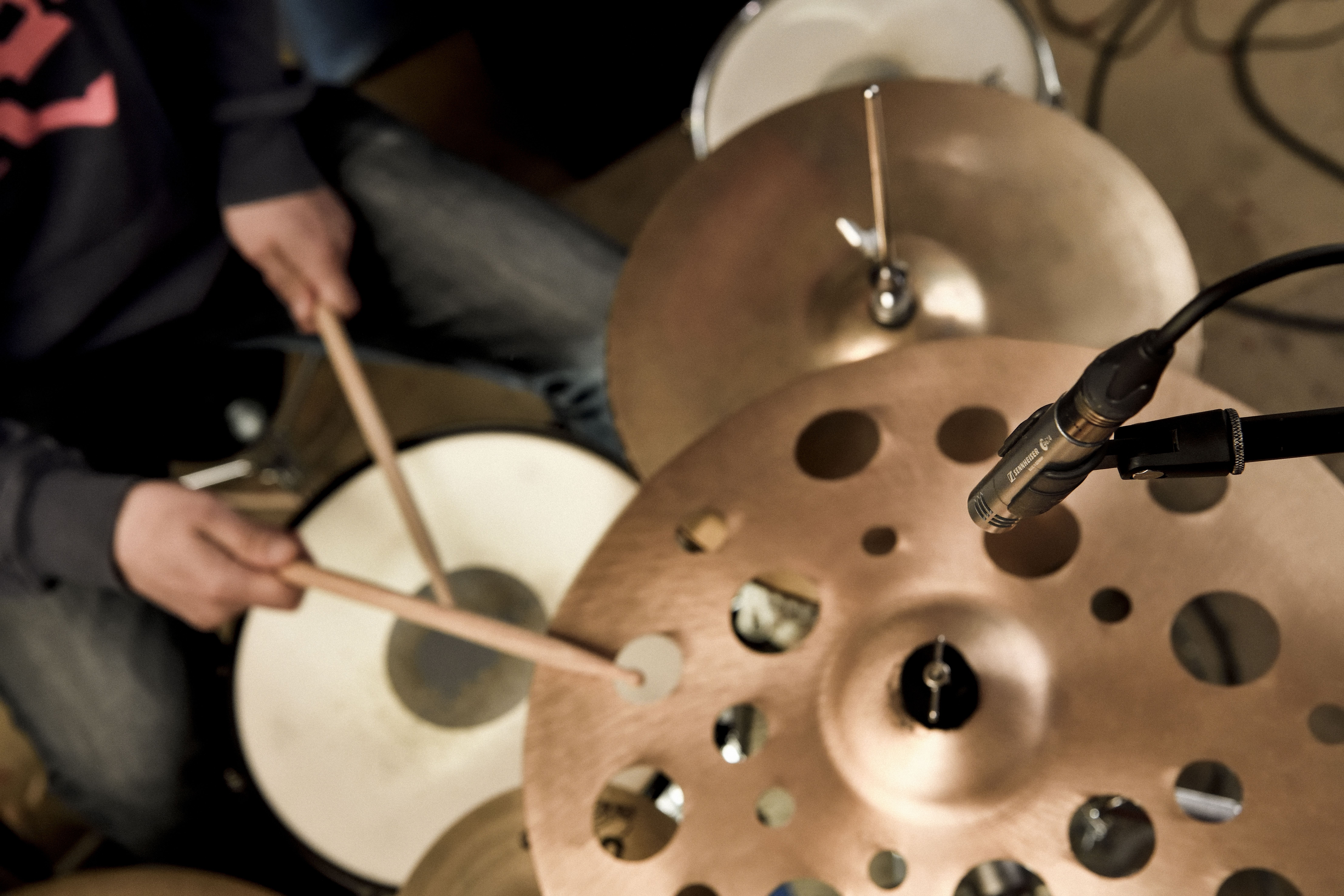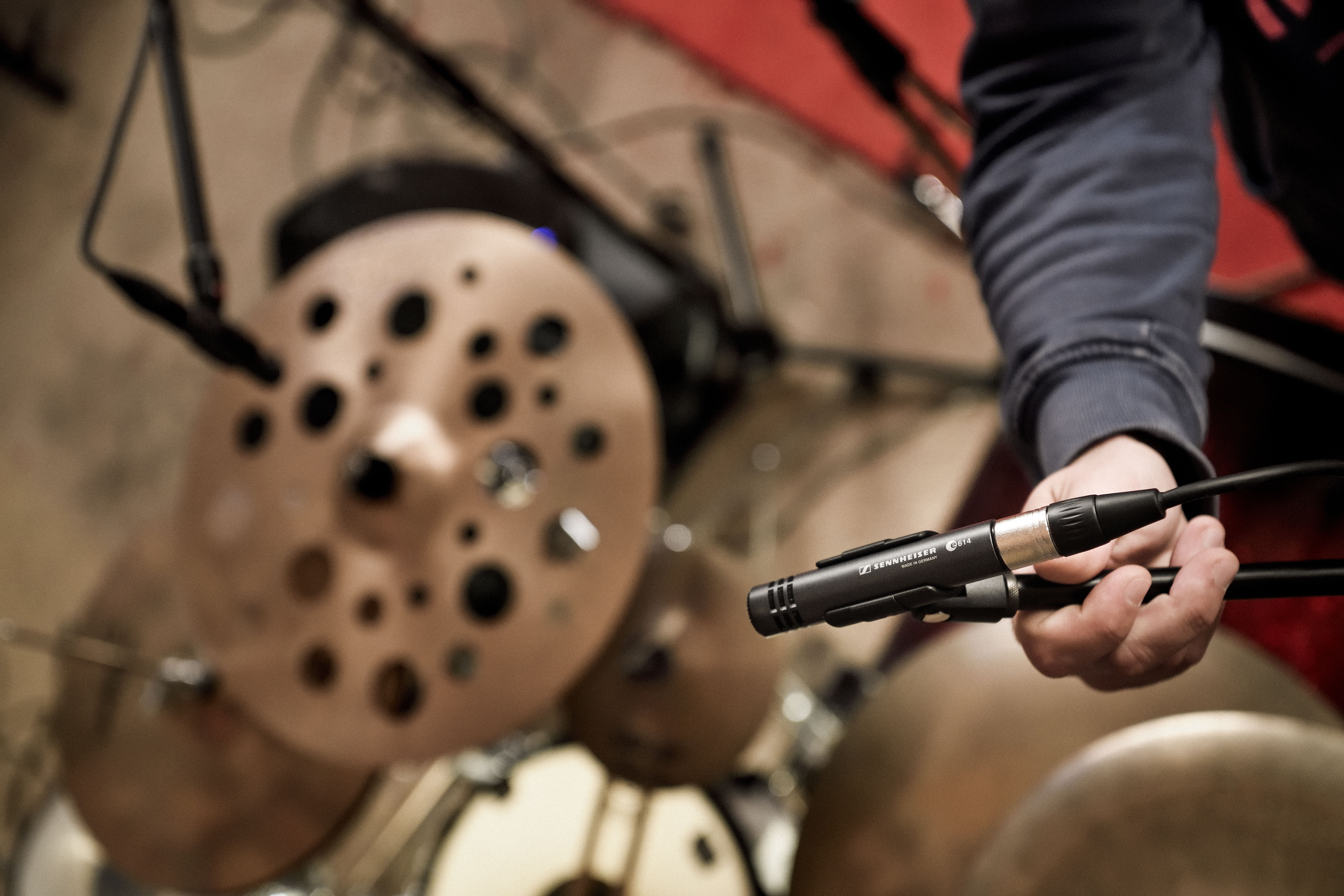The evolution e 614 is Sennheiser’s “Mic of the Month” for September

Concentrating on the essentials: The versatile e 614 condenser microphone
3 September 2018 – The small-diaphragm e 614 condenser is robust, good value for money – and Sennheiser’s Mic of the Month for September (happyevolution.com). “With the e 614 you are focusing a precise spotlight on a single instrument; it then presents this to you effortlessly in your mix – detailed and completely unfazed by ambient sounds,” explains Kai Lange, Senior Product Manager at Sennheiser.
It’s with a certain amount of pride that Kai Lange weighs the small, dark piece of metal in his hand: “Virtually indestructible. And you can really feel it.” To reinforce the point, he then sets it down on the table in front of him with a bang. The e 614 indeed has a reputation of being a tough cookie. The sound engineer from Sennheiser explains why: “Extra thick housing, reinforced gauze – you can use it to hit a nail into the wall.”
The e 614 however is less suitable as a hammer: With a length of just 10 cm and a diameter of only 2 cm it is very compact even for a small-diaphragm condenser microphone, and can therefore be easily positioned. With such a construction, tough recording sessions and very small spaces won’t do it any harm. The best prerequisites for use on tour but also in rehearsal rooms.

A typically special condenser microphone
And the sound? “Where the sound is concerned, the e 614 is a typical condenser microphone: detailed, neutral, very good transient response. In that respect, we haven’t tried out any new tricks,” says Lange.
But then in order to add something special after all: “The majority of small-diaphragm condensers are cardioid microphones. With the e 614, however, we plumped for a super-cardioid one because this allows it to perform its task even better within the evolution 600 family,” continues Lange.
“The e 614 was one of the last microphones to join the series and rounds it off with its specialization in percussion, piano, acoustic guitars, woodwinds and as an overhead mic – basically everything that a small-diaphragm microphone is best at capturing. Together with its super-cardioid pick-up pattern it can focus superbly on one instrument.” A further advantage of this focus is that in rooms which have not been soundproofed it is hardly distracted by sound reflections – ideal for spontaneous sessions in unusual locations.
Indebted to the family
But the e 614 would not be a genuine member of the 600 series if it didn’t also offer outstanding value for money. “It wasn’t so easy to develop a condenser microphone that met our standards but also at a price that beginners can genuinely afford,” says Kai Lange. In fact, the e 614 is the lowest-priced condenser microphone offered by Sennheiser. Unlike the dynamic microphones of the evolution 600 series, automated production of the e 614 is not possible. “Consequently, we have drawn on all our experience and done what the e 614 itself does: focused on the essentials and dispensed with any extras,” explains Lange. For example, the e 614 doesn’t have any switches or adjustment options. Or as Lange summarizes it: “Optimum set-up? Just plug it in and you’re good to go.”
Miking tips for the e 614
When positioned correctly, the super-cardioid e 614 concentrates on one sound source and filters out neighbouring sources. That makes it all the more important to find its sweet spot. You can shape its sound if you observe these two basic rules:

1. The direction has to be right
Naturally you have to align the e 614 precisely with the instrument (ideally its body) that it is supposed to be miking. Admittedly that is only half the battle, because all sound sources that are to be filtered out should be diagonally behind the e 614. At 135°, to be precise. There, the microphone hears almost nothing owing to its super-cardioid pick-up pattern. But don’t worry, you don’t need to use a protractor during positioning. The sensitivity only increases slowly towards the front, which means that “diagonally behind” is absolutely sufficient in most cases.
2. The distance determines the sound
This is due to the proximity effect, which means that low-range frequencies which are picked up near the sound source are emphasized more strongly. You can make use of precisely this phenomenon when positioning the e 614. If an instrument happens to sound feeble and thin – just bring it closer! In this way you will get a signal with more volume and substance. But be careful with acoustic guitars whose bass sounds have a habit of ‘booming’ if the microphone is too close. If, however, you can only get your perfect sound with the microphone very close to the instrument, then the mixing desk will help you correct bass sounds that are too heavy. Specifically you can activate the low-cut function (which filters out unwanted low frequencies) or quite simply turn down the bass sounds. But as always with miking: with the e 614, too, testing and trying things out is crucial.
Boxout: condenser versus dynamic microphone
In a condenser microphone, the diaphragm oscillates in front of an electrically charged metal plate. If the distance between the two changes, then the current flow also changes – bingo, we’ve got the signal. Condensers can in principle capture sound more “finely”, pick up more frequencies and are more agile in their response to rapidly changing sound pressure levels.
Dynamic microphones work on the same principle as loudspeakers – just the other way round. The diaphragm is firmly connected to a magnet which, when oscillation takes place, plunges into a coil. This generates current – the signal. Usually dynamic microphones cost less and are more robust both in terms of sound and handling. However, the price of their feedback protection and punchy sound is less realism and poorer resolution compared with condenser microphones.
Boxout: small versus large diaphragm
Although dynamic microphones also have diaphragms, only condenser microphones are classified according to whether they have small or large diaphragms.
We refer to them as large-diaphragm if they have a diameter of at least one inch, i.e. 25.4 mm. They shape the sound by adding an individual quality which provides warmth and fullness. Small diaphragms are generally smaller than half an inch. Their specialty is capturing the sound particularly realistically without adding anything to it. This neutrality provides an extremely detailed sound and opens up several possible applications for small-diaphragm microphones.
Boxout: cardioid versus super-cardioid
The “pick-up pattern” is a way to showing how well microphones “hear” sounds from certain directions. These pick-up patterns are named after their particular shapes.
With small-diaphragm condenser microphones, there is often a cardioid pick-up pattern – so-called as these microphones capture sound from a heart-shaped area around the microphone. They record sound from the front and the sides well, while sound from the rear is virtually filtered out. Here, at 180°, the cardioid pick-up pattern has its maximum cancellation.
Compared with cardioid microphones, super-cardioid mics have a greater focus on the sound from the front, and less on sound from the sides. The super-cardioid pattern has its maximum cancellation between 120° and 150°, i.e. is least sensitive to sound coming diagonally from behind.
Tutorial on overhead miking with the e 614: https://www.youtube.com/watch?v=NLAkrfFb85I


